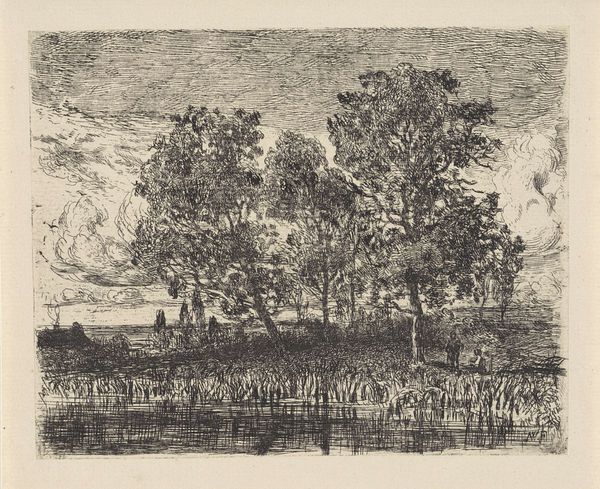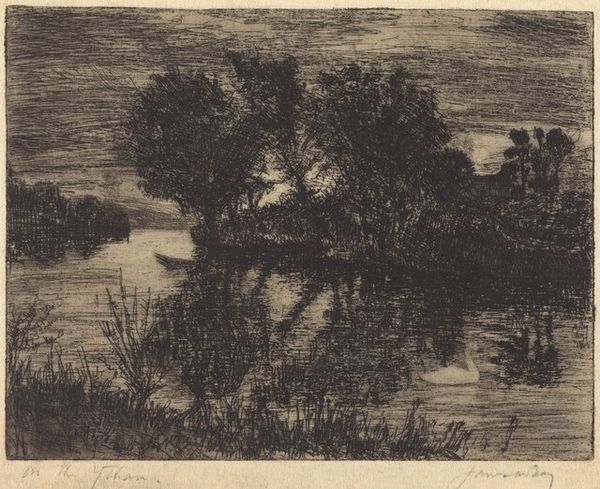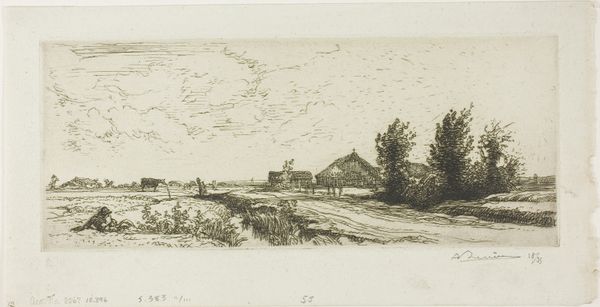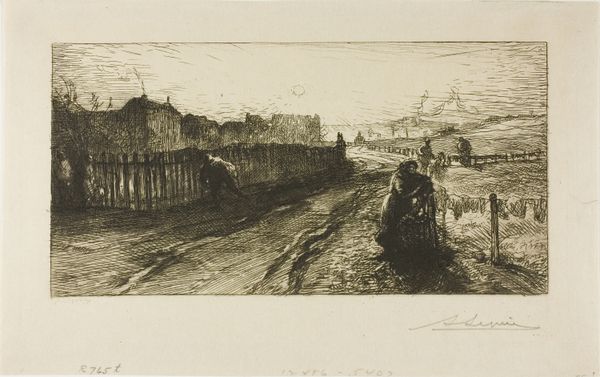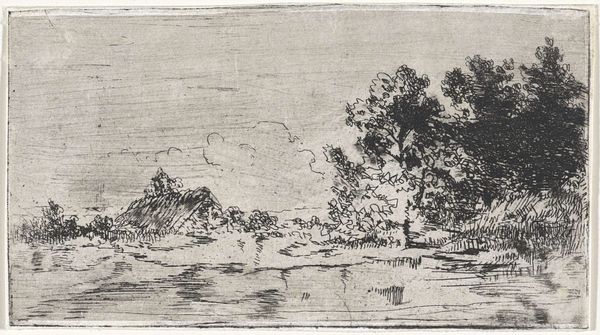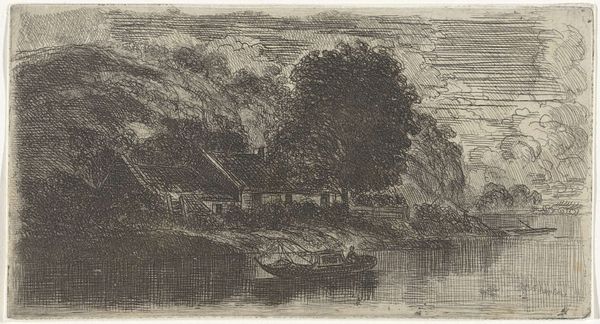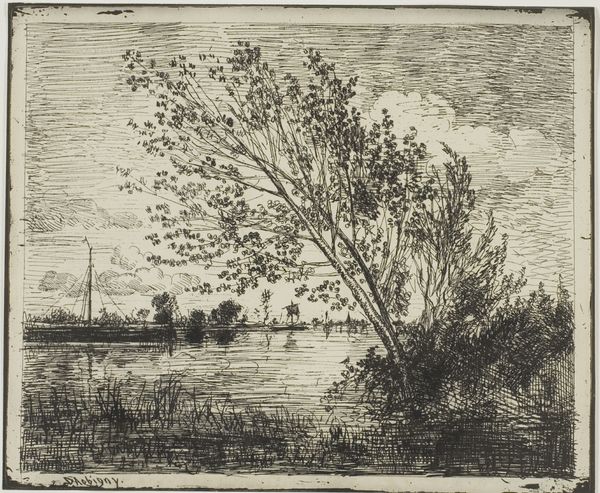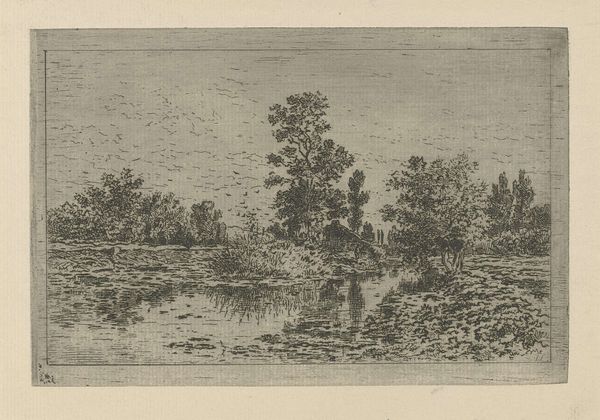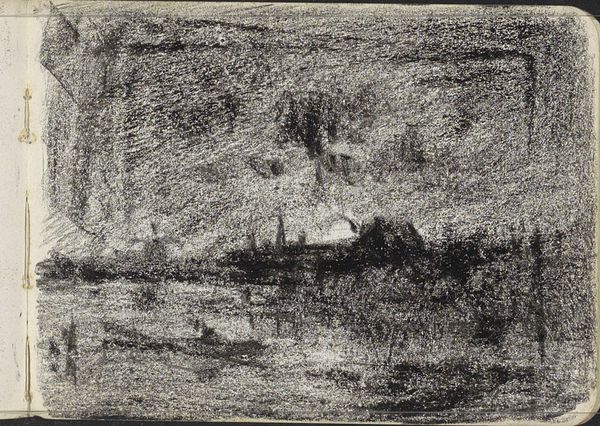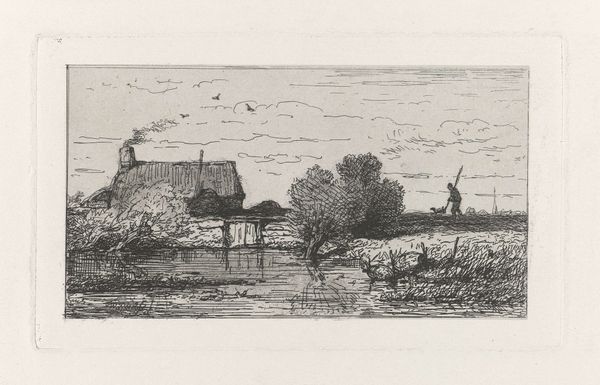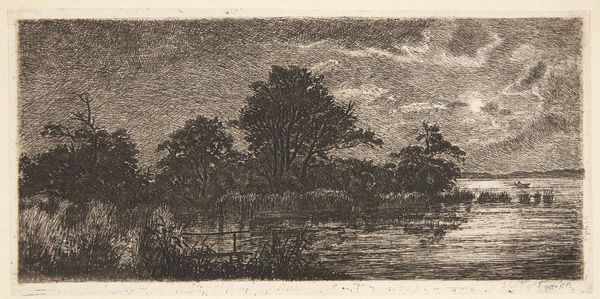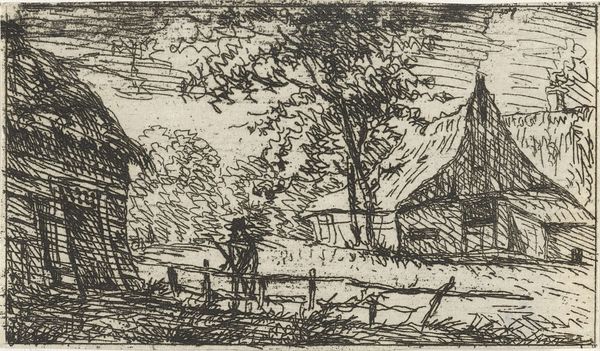
drawing, etching, ink
#
drawing
#
etching
#
landscape
#
ink
#
realism
Dimensions: height 47 mm, width 68 mm
Copyright: Rijks Museum: Open Domain
Curator: This is "Landscape with Haystack" by Paul Joseph Constantin Gabriël, an etching with ink completed sometime between 1853 and 1882. It’s part of the Rijksmuseum's collection. Editor: My first impression is that it evokes a melancholic, almost ominous stillness. The density of the hatched lines creates a heavy atmosphere. Curator: Absolutely. This piece emerges from a period of significant change in Dutch rural life. We see the impact of industrialization on agricultural practices reflected in the simplicity of this haystack, which suggests themes of labor, land ownership, and the evolving relationship between humans and the natural world. Editor: Yes, and consider how the formal qualities mirror this: The artist uses horizontal lines across the sky to give it breadth while darker areas draw us in – note how it creates a planar recession away from us, almost trapping us between foreground and sky. Curator: It's interesting how Gabriël uses the seemingly simple subject of a haystack to allude to these grand societal shifts. The haystack can be interpreted as a symbol of traditional agrarian society standing in the face of modernity. Its humble presence gains profound political significance. Editor: I’m curious about the composition; how does it speak to these concerns? I see the textures suggesting how transient and ephemeral human labor is. Curator: Considering its time, we could explore the societal conventions and expectations of agricultural workers—a perspective not typically captured, focusing more on middle class ideals. We must then interpret the significance of this artwork to challenge the normative expectations. Editor: And to push this reading even more from a compositional point, this artwork's structure really leans into asymmetry, which makes that quiet revolution almost seem plausible; it creates an imbalance, perhaps a sign of instability for the farming family. Curator: Exactly! The enduring legacy and modern reinterpretation can allow viewers to interpret its themes in the modern context as well. The work promotes critical reflection on our contemporary landscape and reminds us to approach the work with historical contextual knowledge to truly appreciate its purpose and the statement that it makes. Editor: The close reading illuminates the artist’s capacity to communicate, by carefully articulating the planes and the symbolic weights to really pull forward meaning, while not ignoring any surrounding circumstances of its inception.
Comments
No comments
Be the first to comment and join the conversation on the ultimate creative platform.
